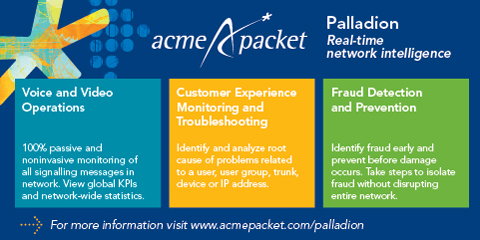Tracking the All-IP Customer Experience
By: Tim Young
 If you want to take a look at how society’s concept of the future of technology is changing, there’s perhaps no better source to examine than Star Trek. For decades, the Star
Trek franchise has given us versions of the future that are constantly updating themselves in relation to the realities of the present. In the 1960s, the heroes of the
Enterprise used hand-held communicators that could communicate real-time between planet surfaces and orbiting ships. By the 1980s, the space explorers were wearing their devices as
badges, and interactions were all voice-activated. And then, just a few years ago, the original Star Trek was given a reboot, complete with touch-screen communications and a glossy,
next-gen feel.
If you want to take a look at how society’s concept of the future of technology is changing, there’s perhaps no better source to examine than Star Trek. For decades, the Star
Trek franchise has given us versions of the future that are constantly updating themselves in relation to the realities of the present. In the 1960s, the heroes of the
Enterprise used hand-held communicators that could communicate real-time between planet surfaces and orbiting ships. By the 1980s, the space explorers were wearing their devices as
badges, and interactions were all voice-activated. And then, just a few years ago, the original Star Trek was given a reboot, complete with touch-screen communications and a glossy,
next-gen feel.
And those visions of the future are just the tip of the iceberg. Science fiction contains countless examples: two-way video calls made from devices that are part television, part computer, part communications console. Communications devices worn on wrists or in earpieces or even implanted into the ear that provide instantaneous two-way communications over a wide area. Calls from holograms. Real-time communications across galaxies.
Sometimes, over time, we see these devices become reality. Other times they don’t work out. That’s the nature of speculative fiction. However, if you ask a wide array of communications industry experts what the communications network of the future will look like, you’re likely to get responses that vary nearly as widely as the options offered by novels and cinema. However, beyond the details of the specific devices or applications, most of those communications experts will be able to agree of a few key characteristics about the underlying nature of tomorrow’s network. Most will concede that the network will be collaborative in nature, with many players ‘touching’ the end-user. Most will also note that M2M connections will be numerous and noteworthy. Furthermore, pretty much everyone will agree that the future of communications lies within a converged, all-IP network.
On the wireline voice side, TDM-driven legacy networks are clearly on the way out. At its 2011 annual meeting, the FCC’s Technology Advisory Council set a target end date for the PSTN of 2018. Even if that isn’t an entirely accurate sunset date, it is evident that there are active moves to fully eliminate the legacy voice environment in favor of an all-IP world.
But, of course, the shift to all-IP isn’t a purely wireline voice story. The shift toward and all-IP network is evident across all communications segments, including wireless and wireline, and also including business services and enterprise offerings. All-IP wireless technologies like 4G LTE are growing at a tremendous rate. A recent report by Strategy Analytics predicts that global LTE connections will hit the 90 million mark by the end of 2012, and the 1 billion mark by 2017.





















